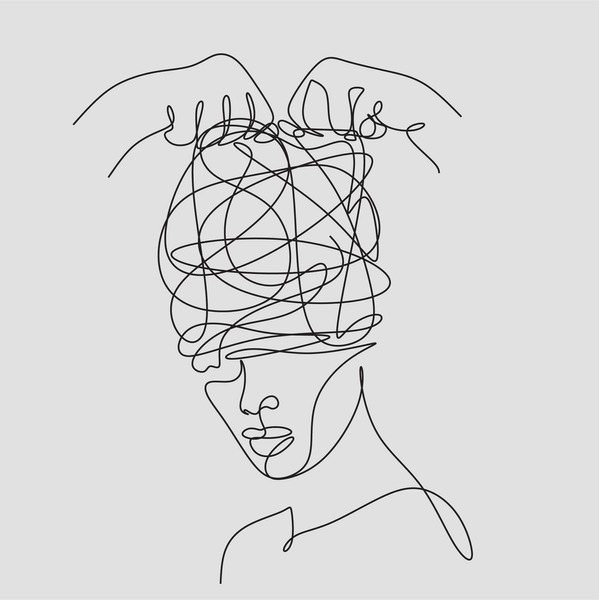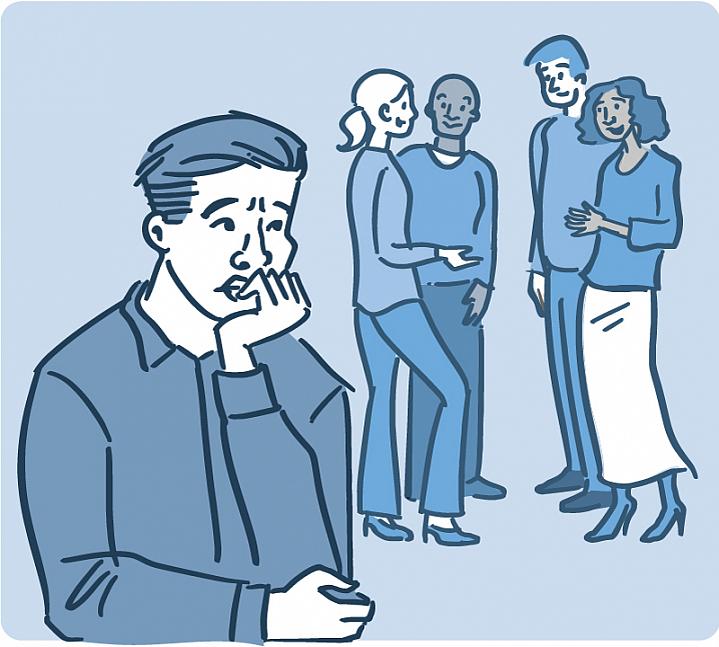*Introduction:*
- Brief definition of anxiety
- Mention of its prevalence in society
- Importance of addressing and understanding anxiety
**Section 1: What is Anxiety?**
- Distinguishing anxiety from normal stress
- The role of fear and worry
- Types of anxiety disorders (Generalized Anxiety Disorder, Social Anxiety, Panic Disorder, etc.)
**Section 2: Causes and Triggers:**
- Biological factors (genetics, brain chemistry)
- Environmental factors (stressful events, trauma)
• - Psychological factors (personality, learned behaviors ) . **Section 3: Symptoms of Anxiety:**
- Physical symptoms (heart palpitations, sweating, muscle tension)
- Emotional symptoms (irritability, restlessness, fear)
- Cognitive symptoms (racing thoughts, difficulty concentrating)
**Section 4: Impact on Mental and Physical Health:**
- Connection between anxiety and other mental health disorders (depression, OCD)
- The toll on physical health (cardiovascular issues, weakened immune system)
**Section 5: Seeking Help**
- Importance of professional intervention
- Therapeutic approaches (counseling, cognitive-behavioral therapy, medication)
- Support from friends and family
**Section 6: Coping Strategies:**
- Lifestyle changes (exercise, sleep, nutrition)
- Mindfulness and relaxation techniques
- Developing a support network
. **Section 7: Breaking the Stigma:**
- Challenges in addressing mental health stigma
- The role of education and awareness
- Encouraging open conversations about anxiety
**Section 8: Personal Stories:**
- Real-life experiences of individuals dealing with anxiety
- Highlighting resilience and recovery
**Conclusion:**
- Recap of key points
- Encouragement for seeking help
- Hope for a future with reduced anxiety stigma
Feel free to expand on each point to meet your desired word count. If you have specific subtopics or details you’d like to include, let me know!
**Section 9: Cognitive Distortions and Anxiety:**
Within the realm of anxiety, cognitive distortions play a pivotal role in shaping how individuals perceive and interpret reality. These distortions are irrational thought patterns that contribute to heightened anxiety levels. Understanding these cognitive distortions is crucial for both individuals grappling with anxiety and those supporting them.
*Common Cognitive Distortions:*
1. **Catastrophizing:** This distortion involves expecting the worst possible outcome, often blowing situations out of proportion. For someone with anxiety, a minor setback might be perceived as a catastrophic event.
2. *Olvergeneralization:* Individuals prone to overgeneralization draw sweeping conclusions based on limited evidence. For instance, a single negative experience may lead to the belief that similar situations will always yield negative outcomes.
3. **Black-and-White Thinking:** Also known as all-or-nothing thinking, this distortion involves perceiving situations in extremes without acknowledging the middle ground. An individual may view themselves as either a complete success or an utter failure, leaving no room for nuance Black-and-White Thinking:** Also known as all-or-nothing thinking, this distortion involves perceiving situations in extremes without acknowledging the middle ground. An individual may view themselves as either a complete success or an utter failure, leaving no room for nuance situations in extremes without acknowledging the middle ground. An individual may view themselves as either a complete success or an utter failure, leaving no room for nuance Black-and-White Thinking:** Also known as all-or-nothing thinking, this distortion involves perceiving situations in extremes without acknowledging the middle ground. An individual may view themselves as either a complete success or an utter failure, leaving no room for nuance..
*Impact on Mental Well-being:*
Cognitive distortions exacerbate anxiety by distorting reality and fostering negative thought patterns. They contribute to a heightened sense of threat, intensifying emotional and physical symptoms associated with anxiety. 



You must be logged in to post a comment.